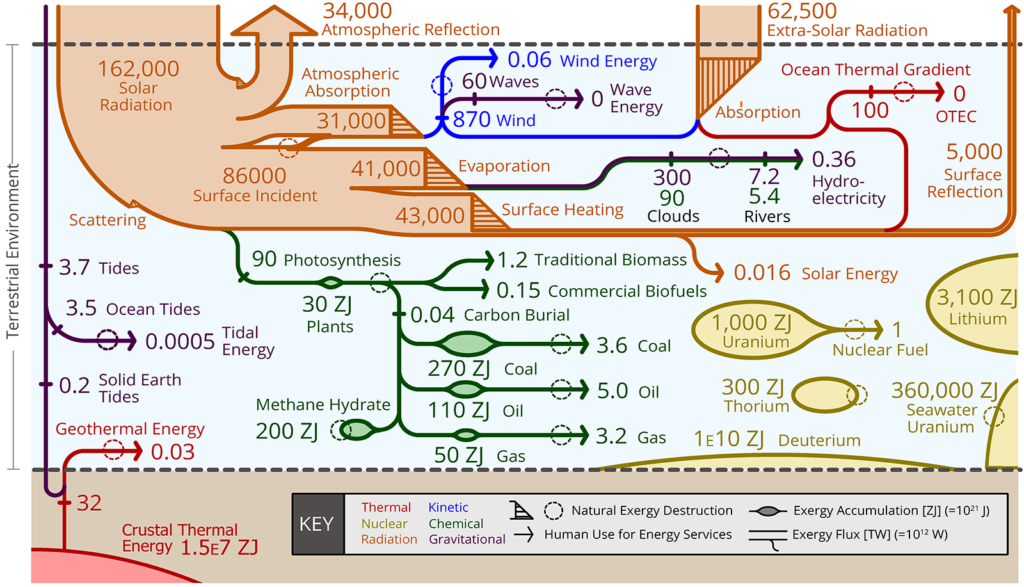Global Energy Flows and Reservoirs

The earth and its atmosphere have flows and reservoirs of energy sources that are converted into useful energy services such as heating and motion. The resources, shown in the bubbles, represents the different types of energy that have been accumulated (shown in ZJ, or zetajoules) over millenia on the Earth’s surface, its crust, or the oceans. The lines and bars represent the fluxes (shown in TW, or terawatts), andthe arrows show the portion humans use. Each resource has a different abundance, availability andaccessibility. For example, deuterium is very abundant, but is difficult to harness through nuclear reactions to generate useful energy. The most important flux of energy is the incoming solar radiation, which is about 10,000 times greater than the combined global rate of human energy consumption. However, much of that solar radiation is reflected back to space or consumed through the evaporation of water from oceans. That evaporated water is held in the atmosphere, which can be harnessed with hydroelectric power plants as it falls back to earth by gravity. Another significant portion of solar radiation drives photosynthesis, which converts solar energy into chemical energy stored in plants. Those plants can be used for bioenergy or are converted through geological processes into fossil fuels such as coal, petroleum and natural gas.

Image Credits: Es sarawuth/stock.adobe.com.


